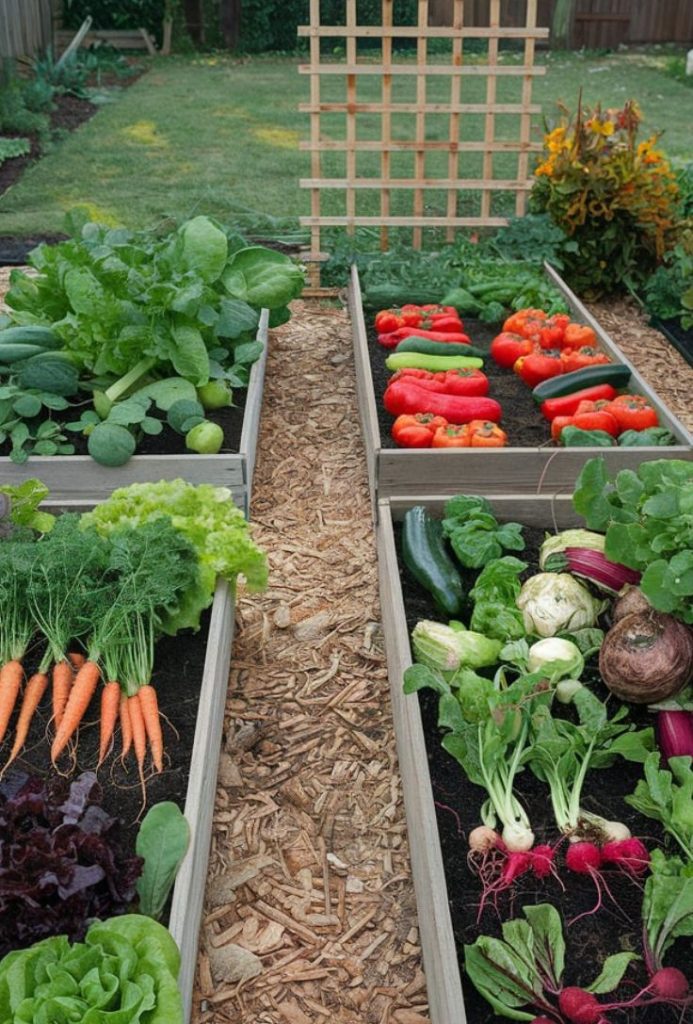For many beginner gardeners, the journey into growing their own food begins with herbs. There’s a simple joy in stepping into your backyard and snipping fresh basil for a pasta dish or rosemary for a roasted chicken. Herbs are the perfect starting point because they are forgiving, low-maintenance, and incredibly rewarding. As of early August, many herbs are in their prime and ready for a late-season planting or a final summer harvest.
Here’s a beginner’s guide to starting how to create a food garden at home.
Why Herbs Are Perfect for Beginners
- They’re Easy to Grow: Many herbs are naturally hardy and thrive on minimal attention. They are far less demanding than most vegetables, making them a great confidence builder for a new gardener.
- They’re Versatile: You can grow herbs in a dedicated garden bed, tucked into the corners of a vegetable patch, or in containers on a patio, balcony, or even a windowsill.
- They’re Highly Productive: A single herb plant can provide you with a continuous supply of fresh flavor throughout the growing season. The more you snip, the more they grow.
The Easiest Herbs to Grow
For your first herb garden, stick to these reliable and popular choices:
- Basil: A summer favorite, basil loves plenty of sun and warmth. It’s an excellent choice for a container and is a perfect companion plant for tomatoes. Just remember to pinch off any flower buds that form to encourage more leaf growth.
- Mint: Mint is so easy to grow that it can actually take over your garden. For this reason, it’s best to plant it in its own container to keep its aggressive runners from spreading. It thrives in both sun and partial shade and is perfect for teas and cocktails.
- Rosemary: This woody herb is very hardy and drought-tolerant once established. It loves full sun and well-draining soil. It’s an evergreen herb, meaning it will provide fresh flavor year-round in many climates.
- Thyme: A low-growing, sun-loving herb, thyme is incredibly forgiving and aromatic. It can be planted in a pot or used as a border in a raised bed.
- Parsley: A classic that can be grown in a sunny spot or one that gets a little bit of afternoon shade. It can be harvested continuously throughout the season.
- Chives: Part of the onion family, chives are easy to grow and come back year after year. Their mild onion flavor is a great addition to salads, soups, and egg dishes.
How to Get Started: The Simple Steps
- Choose Your Method: Decide whether you want to plant your herbs directly in the ground or in containers. Containers are an excellent choice for beginners because they give you complete control over the soil and make it easy to move the plants to a sunnier spot or indoors if needed.
- Location, Location, Location: Most herbs thrive in full sun, so choose the sunniest spot in your backyard or on your patio. A location that gets at least 6 hours of direct sunlight is ideal.
- Planting: For beginners, buying small herb plants (seedlings) from a local nursery is a great way to start. Just dig a hole, place the plant inside, gently pat the soil around it, and water it thoroughly. If you’re planting mint, remember to keep it in a separate pot!
- Watering: The most common mistake with herbs is overwatering. Most herbs, especially woody ones like rosemary and thyme, prefer their soil to dry out slightly between waterings. Stick your finger an inch into the soil; if it’s dry, it’s time to water.
Harvesting and Maintenance
Harvesting your herbs is not only the most rewarding part, but it also helps the plant grow. Simply snip off the leaves or stems as you need them. For basil and mint, pinching off the top leaves encourages the plant to branch out, giving you a bushier, more productive plant.
A backyard herb garden is a simple way to bring fresh flavor to your cooking and a little green space into your life. With minimal effort, you can enjoy a continuous supply of these delicious, fragrant plants.


